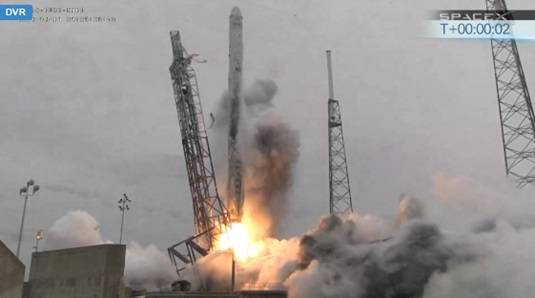And another story from yesterday that I would have covered:
The Falcon 9 rocket lifted off from Cape Canaveral on schedule at 12:35pm PDT (8:35pm UTC), carrying 5,000 pounds of supplies for the ISS. The first stage separated cleanly two minutes and fifty one seconds into the flight, 103km above the launch pad, and the Dragon capsule has deployed its solar panels and is now on course to dock with the ISS in two days, once orbital paths have matched up.SpaceX shoots off the launch pad right on time
It was a very close run thing. The CRS-3 mission was due to take off on Tuesday but was cancelled after a helium leak was detected. Friday’s launch was much tighter, and SpaceX said the launch had a one-second window if the rocket was to successfully insert its cargo into the right orbital plane.
Weather was a big worry for the SpaceX team. There was rain and relatively heavy clouds at the launch site, and the team floated multiple weather balloons into the upper atmosphere to make sure that winds weren’t too strong at altitude.
Unfortunately, the heavy winds and storm conditions in the Atlantic may hamper the second part of Friday’s mission: the remote landing of the first stage of the Falcon 9 rocket. After separating, the booster is planned to fire up again and slow down, falling back towards the Earth.
If all goes well, the rocket will then deploy four legs, which were covered for the initial launch phase, and begin a controlled burn to slowly sink towards the ocean and hover for landing and retrieval. At least, that was the plan.
But the inclement weather means the SpaceX support ship that was due to witness the rocket’s return and retrieve the hardware couldn’t get into position. SpaceX says it will attempt the soft landing anyway, but there’s no word yet on its success or otherwise.




